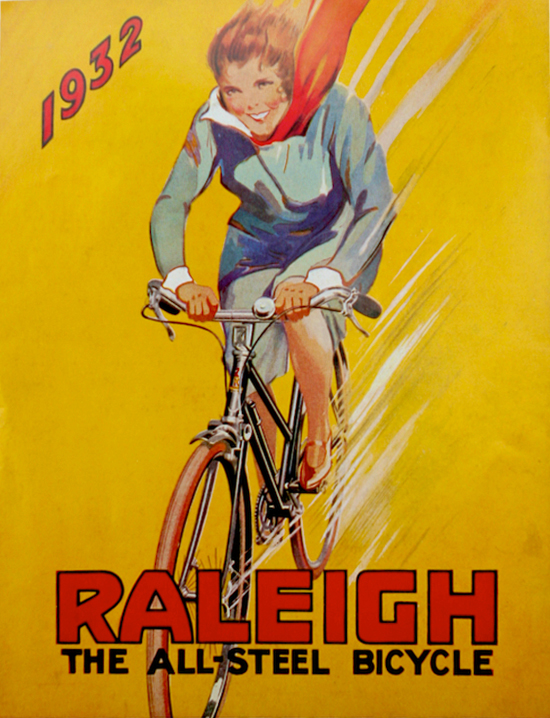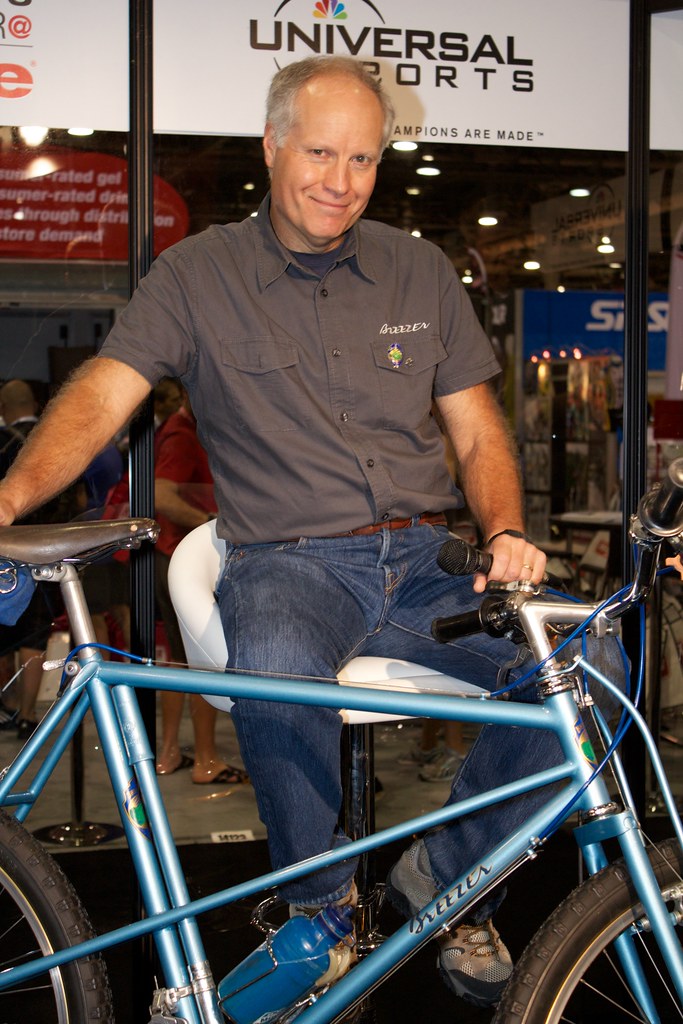Cycling has many well-understood health and economic benefits but a key benefit is often overlooked – urban nippiness. Motorists slow to a crawl in “rush” hour; those on bicycles don’t. Many people perceive cycling to be a slow form of transport, which it is, if you have to undertake a long journey. Short hops are swift on a bike. There’s a chapter on the history of speed in Roads Were Not Built For Cars, and I’ll explore the subject again in Bike Boom.
The illustration above is by Italian Futurist artist Umberto Boccioni. The sketch was used for Boccioni’s “Dynamism of a Cyclist”, below, painted in 1913. I prefer the sketch because it’s a more graphic illustration of cycling’s dynamism.
Raleigh stressed speed in the 1932 advert above, even though it was selling utility bikes to women.
Speed doesn’t have to mean head down, sweat and Lycra. Cycle routes which steer away from the fastest A to B routes may direct cyclists away from motorised traffic but it’s not just MAMILs who want to follow ‘desire lines’, the shortest and more desirable routes.
In the UK, dedicated cycle routes are often circuitous, interrupted by junctions where cyclists do not have priority. They can add precious time to journeys. For cycleways to be effective, they must be not only made safe for hesitant cyclists, they must be made fast. By fast, read direct.
Copenhagen does this well. Traffic lights propel cyclists on a ‘Green wave’: pedal at 20kmh and you hit green for much of your journey. The green wave is set to work best towards the city centre in the morning rush hour; and away from the city centre at 12 to 6pm.
Those who use their bikes to get to work want to arrive in the least time possible. When cycleways are provided, they need to be very wide, and well designed. For many of today’s advocates this means one, Dutch-style network rather than a fast network for MAMILs and a slower network for 8 and 80 year olds.
This hasn’t always been the preferred option. In 1996, the Proceedings of the Institution of Civil Engineers, writing about bike paths, said:
“The fast cycle commuter must not be driven off the highway onto a route that is designed for a 12-year-old or a novice on a leisure trip, because if that happens, the whole attempt to enlarge the use of the bicycle will have failed.”
While the “dual network” approach is now largely discredited it’s worthwhile looking at that phrase “fast cycle commuter”. It does not just have to mean a young, fit, male cyclist on a carbon road bike. Dutch roadsters can be pedalled fast, and so can “Santander Boris Bikes”. For some people, bicycles might be “aids to walking” but if bikes travelled no faster than pedestrians, why cycle at all?
In 2011 I chatted about speed with Joe Breeze, one of the founding fathers of mountain biking. He may have built the first designed-for-the-job clunker (it was Gary Fisher who helped popularise the name ‘mountain bike’) but Breeze got into the bike biz to spread his love of utility cycling, cycling from town to town. His father built race cars in California, but rode to work on a bicycle. Breeze Jnr started racing bikes to prove what Raleigh and others had been promoting: that bicycles are fast.
“In the 1970s, I saw road racing as a stepping stone. Bicycles in America were seen as a children’s sidewalk toy, for riding round your neighbourhood only. I saw cycling, through my father, as a way to get somewhere. And through racing you could show people how quickly you can get from A to B. Maybe there’d be a little squib in the newspaper about it the next day and people would go ‘oh, you can get from A to B in a short amount of time.’”
Speed – to and from work – remains important. A survey of Copenhagen bicycle users found that the number one reason people ride is because it’s faster than any other mode of transport. Fifty-five percent of Copenhagen riders said they bike because it’s fast. Only 9 percent of Copenhagen bicycle users ride because it’s deemed good for the environment.
So, when pushing for dedicated bicycle infrastructure we must always bear in mind that today, and in the past, speed has always gone hand in hand with convenience. Make cycling slow and it loses a big part of its appeal.
+++
The Kickstarter for Bike Boom runs until March 17th. Please consider pledging for first-edition rewards and more.
https://www.kickstarter.com/projects/carltonreid/bike-boom-the-book
+++




